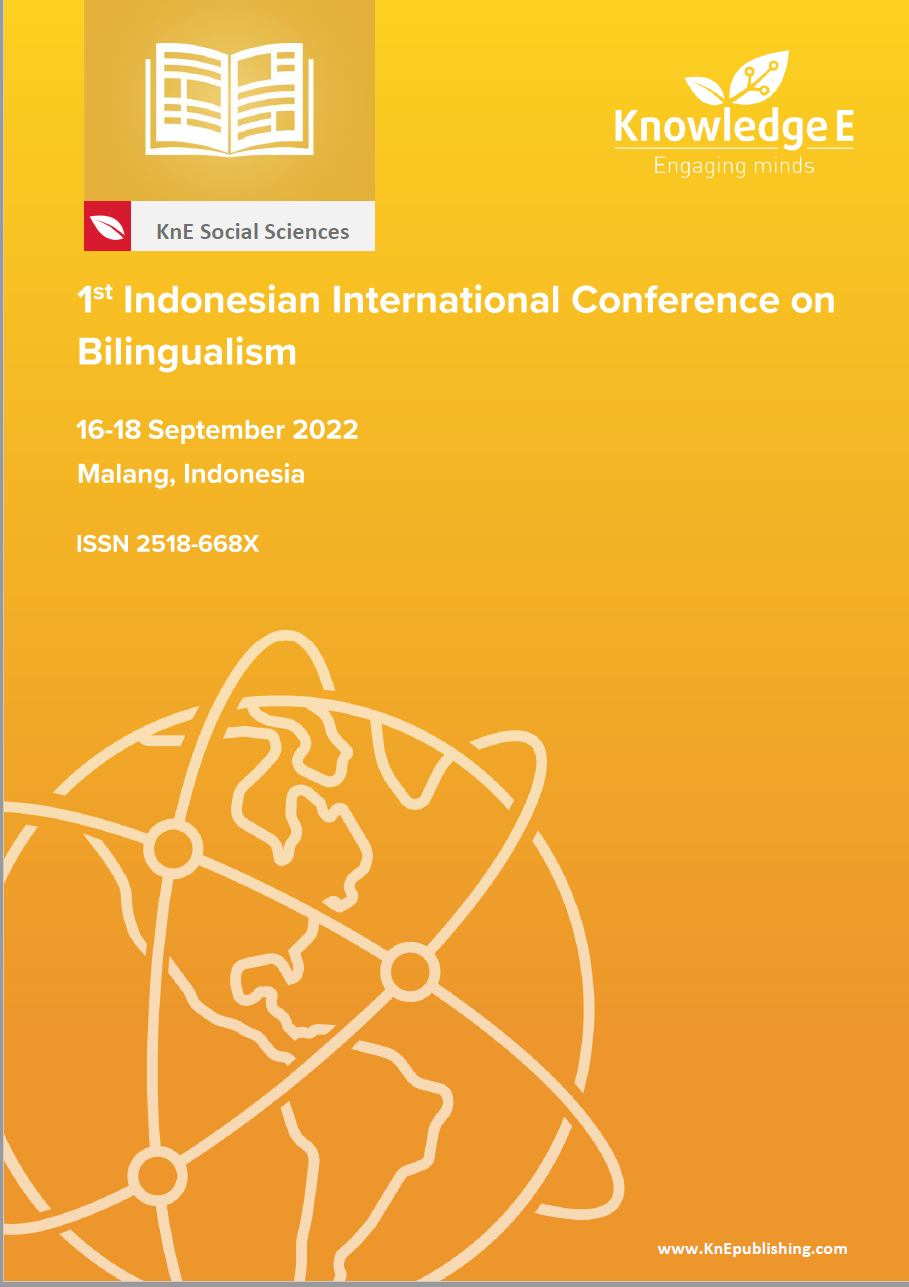Can Duolingo Help People Master a Foreign Language?
DOI:
https://doi.org/10.18502/kss.v8i7.13244Abstract
Being bilingual has long been considered an advantage over monolingual speakers. People no longer view being able to communicate in one language as more prestigious, showing that the language is superior and the speakers do not need to master another language. Most people now want to be able to communicate in a second or third language, and they learn other languages, either by taking classes, learning independently or through applications. One of the most popular apps for learning a second, or foreign language, is Duolingo. This paper will discuss the potential of Duolingo to help people (the users) become bilinguals.
Keywords: bilingual, applications, Duolingo
References
[1] Ahmed HB. Duolingo as a bilingual learning app: A case study. Arab World English Journal. 2016;7(2):255–67.
[2] Bogdan DR. Duolingo as an “Aid” to second language learning: An individual case study. ???''?'???. Journal of Faculty of Education, Ehime University. 2016;63, 199–212. http://www.ed.ehime-u.ac.jp/~kiyou/2016/pdf/20.pdf
[3] Cook V. Second language learning and language teaching. 4th ed. London: Hodder Education; 2008.
[4] Cunningham KJ. Duolingo. TESL-EJ. 2015;19(1). https://teslej. org/wordpress/issues/volume19/ej73/ej73m1/
[5] Duman G, Orhon G, Gedik N. Research trends in mobile assisted language learning from 2000 to 2012. ReCALL. 2015;27(2):197–216.
[6] Duolingo Help Centre. What is Duolingo? Available from https://support.duolingo. com/hc/en-us/articles/204829090-What-is-Duolingo-
[7] Grant A, Gottardo A. Defining bilingualism. Canadian Language and Literacy Research Network. Available from https://www.researchgate.net/publication/ 267152186_Defining_Bilingualism
[8] Jiang X, Rollinson J, Plonsky L, Pajak B. (2020). Duolingo efficacy study: Beginninglevel courses equivalent to four university semesters. Duolingo Research Report DRR-20-04. Retrieved from https://www.duolingo.com/efficacy
[9] Köktürk S, Odacioglu MC, Uysal NM. Bilingualism and bilingual education, bilingualism and translational action. International Journal of Linguistics. 2016;8(3):72.
[10] Loewen S, Crowther D, Isbell DR, Kim KM, Maloney J, Miller ZF, et al. Mobile-assisted language learning: A Duolingo case study. ReCALL. 2019;31(3):293–311.
[11] Oxford RL. Language learning strategies: What every teacher should know. New York: Newbury House; 1990.
[12] Pegrum M. Mobile learning: Languages, literacies and cultures. London: Palgrave Macmillan; 2014. https://doi.org/10.1057/9781137309815.
[13] Rachels JR, Rockinson-Szapkiw AJ. The effects of a mobile gamification app on elementary students’ Spanish achievement and self-efficacy. Comput Assist Lang Learn. 2018;31(1-2):72–89.
[14] Saville-Troike M. Introducing Second Language Acquisition. 2nd ed. Cambridge: Cambridge University Press; 2012. https://doi.org/10.1017/CBO9780511888830.
[2] Bogdan DR. Duolingo as an “Aid” to second language learning: An individual case study. ???''?'???. Journal of Faculty of Education, Ehime University. 2016;63, 199–212. http://www.ed.ehime-u.ac.jp/~kiyou/2016/pdf/20.pdf
[3] Cook V. Second language learning and language teaching. 4th ed. London: Hodder Education; 2008.
[4] Cunningham KJ. Duolingo. TESL-EJ. 2015;19(1). https://teslej. org/wordpress/issues/volume19/ej73/ej73m1/
[5] Duman G, Orhon G, Gedik N. Research trends in mobile assisted language learning from 2000 to 2012. ReCALL. 2015;27(2):197–216.
[6] Duolingo Help Centre. What is Duolingo? Available from https://support.duolingo. com/hc/en-us/articles/204829090-What-is-Duolingo-
[7] Grant A, Gottardo A. Defining bilingualism. Canadian Language and Literacy Research Network. Available from https://www.researchgate.net/publication/ 267152186_Defining_Bilingualism
[8] Jiang X, Rollinson J, Plonsky L, Pajak B. (2020). Duolingo efficacy study: Beginninglevel courses equivalent to four university semesters. Duolingo Research Report DRR-20-04. Retrieved from https://www.duolingo.com/efficacy
[9] Köktürk S, Odacioglu MC, Uysal NM. Bilingualism and bilingual education, bilingualism and translational action. International Journal of Linguistics. 2016;8(3):72.
[10] Loewen S, Crowther D, Isbell DR, Kim KM, Maloney J, Miller ZF, et al. Mobile-assisted language learning: A Duolingo case study. ReCALL. 2019;31(3):293–311.
[11] Oxford RL. Language learning strategies: What every teacher should know. New York: Newbury House; 1990.
[12] Pegrum M. Mobile learning: Languages, literacies and cultures. London: Palgrave Macmillan; 2014. https://doi.org/10.1057/9781137309815.
[13] Rachels JR, Rockinson-Szapkiw AJ. The effects of a mobile gamification app on elementary students’ Spanish achievement and self-efficacy. Comput Assist Lang Learn. 2018;31(1-2):72–89.
[14] Saville-Troike M. Introducing Second Language Acquisition. 2nd ed. Cambridge: Cambridge University Press; 2012. https://doi.org/10.1017/CBO9780511888830.
Published
2023-04-27
How to Cite
Anugerahwati, M. . (2023). Can Duolingo Help People Master a Foreign Language?. KnE Social Sciences, 8(7), 133–139. https://doi.org/10.18502/kss.v8i7.13244
Issue
Section
Articles

